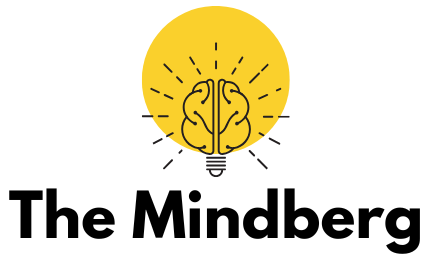Dysgraphia is a learning disability that affects a child’s ability to write, whether it’s in terms of handwriting, spelling, or organizing thoughts on paper. Children with dysgraphia often struggle with tasks that require fine motor skills, making writing laborious and frustrating. While these challenges are not a reflection of intelligence, they can significantly impact academic performance and self-esteem.
It’s essential to understand that children with dysgraphia may find it difficult to express themselves in written form, even though they may have strong verbal communication skills. This can lead to feelings of frustration, anxiety, and a lack of confidence.
However, with the right interventions, children with dysgraphia can thrive academically and personally. The following blog will explore effective strategies for supporting children with writing difficulties, offering practical tips for parents, educators, and caregivers.
Understanding Dysgraphia
Dysgraphia is often misunderstood because it is not as visible as other learning disabilities. It primarily affects writing skills, including both the physical act of writing and the cognitive processes involved in composing written work. Children with dysgraphia may have messy handwriting, difficulty organizing thoughts into coherent sentences, or struggle with spelling and grammar.
The disorder can vary in severity, with some children experiencing minor challenges while others may find writing completely overwhelming. Dysgraphia can co-occur with other learning disabilities such as dyslexia or ADHD, further complicating diagnosis and treatment. Recognizing the signs of dysgraphia early on is critical for implementing strategies that can alleviate its impact.
Early Identification and Diagnosis
Diagnosing dysgraphia typically involves a comprehensive evaluation by a psychologist or other educational professional. This may include observing a child’s handwriting, reviewing academic history, and conducting various tests to assess motor skills and cognitive abilities. Early identification allows for the development of an intervention plan tailored to the child’s specific needs.
Parents and teachers should be aware of common indicators of dysgraphia, such as inconsistent or messy handwriting, slow writing speed, and difficulty with spelling. While every child is unique, an early diagnosis can ensure that the necessary accommodations are made in the classroom and at home to support the child’s academic success.
Using Assistive Technology to Support Writing
Assistive technology has become a game-changer for students with dysgraphia. Devices and applications that convert speech to text, spell-check programs, and graphic organizers can help children bypass the physical challenges of writing. These tools not only make writing tasks easier but also allow children to focus on their ideas rather than struggling with the mechanics of writing.
For instance, voice recognition software allows students to dictate their thoughts instead of writing them by hand. This can be especially beneficial for children who have difficulty with the fine motor skills required for typing or handwriting. Additionally, word processing programs with speech-to-text capabilities enable children to express themselves more freely, boosting their confidence in completing written assignments.
Modifying the Classroom Environment
In the classroom, teachers can provide a variety of accommodations to help children with dysgraphia succeed. For example, allowing extra time for written assignments or offering oral assessments can reduce the pressure associated with writing tasks. Providing notes or outlines ahead of time also gives children a clearer structure for their writing.
Another strategy is allowing students to use a computer or tablet instead of pen and paper, which can alleviate the strain caused by handwriting difficulties. Additionally, teachers can encourage the use of visual aids like graphic organizers, mind maps, or charts to help children organize their thoughts before they begin writing. This approach not only helps with the physical aspects of writing but also assists with the cognitive process of organizing ideas.
Encouraging Handwriting Practice
While assistive technology is helpful, it’s also important to focus on improving handwriting skills through targeted exercises. Using large paper, special pencils, or adaptive tools like pencil grips can help children with dysgraphia improve the motor control needed for writing. Regular practice with letter formation, spacing, and alignment can gradually improve handwriting legibility.
Incorporating fun activities, such as drawing shapes or practicing letter formation through play, can also make the process more enjoyable for children. Additionally, encouraging them to write in short bursts—focusing on quality rather than quantity—helps prevent frustration and burnout. Parents and teachers should celebrate small improvements to motivate children and build their confidence.
Building Writing Skills through Creativity
One effective way to help children with dysgraphia is to make writing a creative and enjoyable process. Children may find it easier to write if the task allows for expression through drawing, storytelling, or other visual means. Creative activities like journaling, making comics, or illustrating a story can stimulate a child’s imagination while allowing them to work on writing in a less intimidating way.
Encouraging children to write about topics they are passionate about makes the task feel more meaningful. It can also help them overcome the reluctance to write and build their writing skills in a more natural and engaging environment. Teachers and parents can offer prompts or themes that encourage creative expression and give children a chance to practice writing without the stress of perfection.
Emotional and Psychological Support
The emotional impact of dysgraphia cannot be underestimated. Children who struggle with writing difficulties may experience feelings of inadequacy, frustration, and low self-esteem. It’s important for parents and educators to provide emotional support by acknowledging these feelings and offering reassurance.
Building self-esteem in children with dysgraphia involves emphasizing their strengths, whether it’s in verbal communication, problem-solving, or creativity. Encouraging children to set realistic goals for themselves and rewarding their efforts, not just the outcome, can help boost their confidence. Positive reinforcement, a supportive environment, and an open line of communication all play crucial roles in helping children with dysgraphia feel understood and valued.
Collaborating with Professionals and Support Networks
Collaboration among parents, teachers, and specialists is key to supporting children with dysgraphia. Regular communication between all parties helps ensure that strategies are consistent across school and home settings. Educational psychologists, special education teachers, and occupational therapists can all offer valuable insights and interventions tailored to the child’s needs.
Additionally, parents should consider joining support groups or networks for families of children with learning disabilities. Sharing experiences and learning from others facing similar challenges can provide emotional support and practical advice. A strong support network ensures that children with dysgraphia receive the resources and encouragement they need to thrive.

